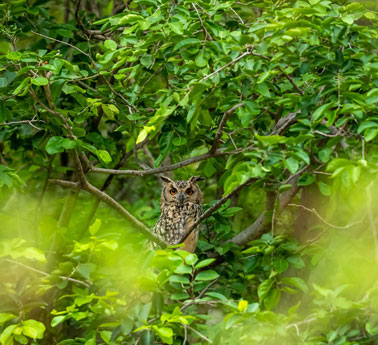Flora in jhalana leopard reserve
Jhalana Leopard Safari, located in Jhalana Forest Reserve in Jaipur, Rajasthan, is primarily known for its leopard population and diverse wildlife. While the focus is often on the fauna, the flora of the region also plays a crucial role in supporting the ecosystem. Here are some of the flora species that you might encounter during a safari in Jhalana:
Dhok (Anogeissus pendula) : Dhok trees are commonly found in the arid regions of Rajasthan, including Jhalana. These deciduous trees provide shelter and are well-adapted to the dry conditions of the region.
Kair (Capparis decidua) : Kair is a thorny shrub or small tree that thrives in arid environments. It is an important plant for herbivores and contributes to the overall biodiversity of the area.


Babul (Acacia nilotica) : Babul trees, with their distinctive thorns, are prevalent in Jhalana. They provide shade and serve as a valuable food source for herbivores. The bark and gum of the babul tree are also used for medicinal purposes.
Khejri (Prosopis cineraria): Khejri is a hardy tree well-adapted to arid conditions. It plays a vital role in providing habitat and sustenance for various animals.
Jamun (Syzygium cumini) : The Jamun tree, or Indian blackberry, is known for its delicious fruits. It is often found in Jhalana and contributes to the food sources for birds and animals.
Gular (Ficus racemosa) : Gular, or cluster fig, is another tree species present in the region. It offers habitat and food for birds and small mammals.
Ronjh (Acacia leucophloea) : Ronjh is a deciduous tree that adds to the vegetation diversity in Jhalana. It contributes to the overall ecological balance of the area.
Things to remember
The diversity of flora is directly linked to the topography of Jhalana, with valleys and slopes offering different habitats.
The flora provides sustenance and shelter for the diverse fauna of the reserve.
Responsible tourism and conservation efforts are vital for protecting the unique flora of Jhalana.
Impact of Human Activity
The introduction of juliflora for firewood has altered the ecosystem, impacting grassland development and native flora diversity.
Conservation efforts are underway to remove juliflora and encourage the growth of native species.

